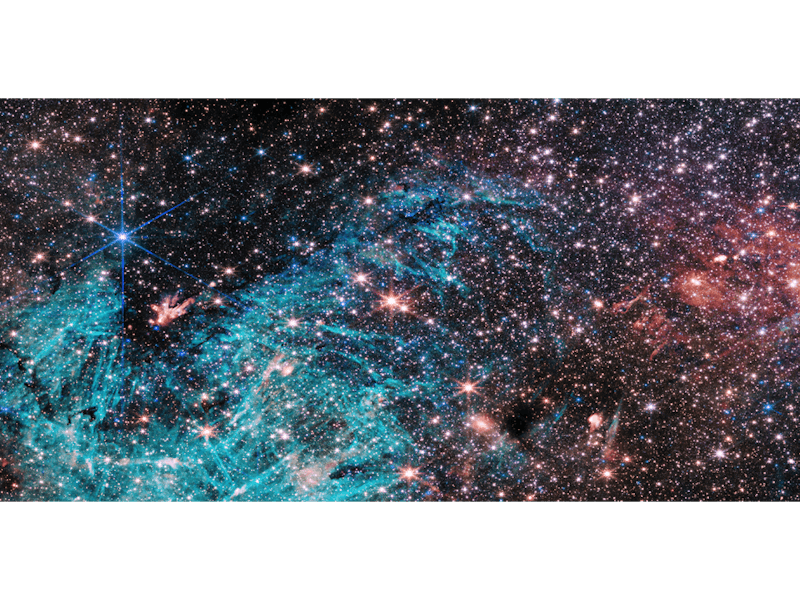Webb Telescope Uncovers Startling Phenomenon Growing Inside The Milky Way
A new image found a massive star nest near a monster black hole.

The heart of the Milky Way revealed some of its secrets to the James Webb Space Telescope (JWST) — and new images could help reveal more about the origin story of the universe.
Just 300 light years from the supermassive black hole that churns in the Milky Way’s center, there’s a hub of about 500,000 stars. JWST saw this place by peering 25,000 light-years from Earth, a relatively short distance by space standards. This proximity allows astronomers to see individual stars, including a nest, and gain data on how massive stars form. The image may help tackle a question of nature versus nurture, offering clues about how a cosmic environment impacts star formation. And some places, like the rose-colored cloud on the image’s right side, have never been seen before in this much detail.
“The galactic center is a crowded, tumultuous place,” Rubén Fedriani, a co-investigator of the project at the Instituto Astrofísica de Andalucía in Spain, said in a statement NASA published on Monday. NASA shares credit for the telescope with the Canadian Space Agency and the European Space Agency.
The Sagittarius C region, seen here in this NIRCam JWST image, is home to approximately 500,000 stars.
What does the image show?
The star-forming region is called Sagittarius C, not to be confused with the name of the supermassive black hole near it, Sagittarius A*. Despite the neighboring chaos, the star nest is dense and abundant with massive protostars, including one juvenile already 30 times the mass of our Sun.
JWST’s Near-Infrared Camera (NIRCam) was able to peer through some, but not all, of Sagittarius C’s dense gas. In the image, a dark region signals where the material was so thick that NIRCam couldn’t see the background stars behind it. Appropriately, this place is called the infrared-dark cloud. And near where this cloud meets the vivid blue region, there’s a pink pocket. It’s a cluster of massive protostars.
“The cloud the protostars are emerging from is so dense that the light from stars behind it cannot reach Webb, making it appear less crowded when in fact it is one of the most densely packed areas of the image,” both space agencies wrote.
The cyan-colored wisps that take up half of the image are hydrogen, which is protostar-building gas that has struck and turned into charged particles.
Searching for answers
“The image from Webb is stunning,” Samuel Crowe, the observation team’s principal investigator and an undergraduate student at the University of Virginia, said in the NASA statement. “And the science we will get from it is even better.”
Massive stars are critical to the evolution of the universe, since they produce heavy elements in their nuclear cores. This hard-to-see cradle of massive stars near the center of the Milky Way might be better — or worse — at making these special stars than other places in our home galaxy, like its extended spiral arms.
To find the answer, astronomers will continue searching for clues in the galaxy’s chaotic heart.